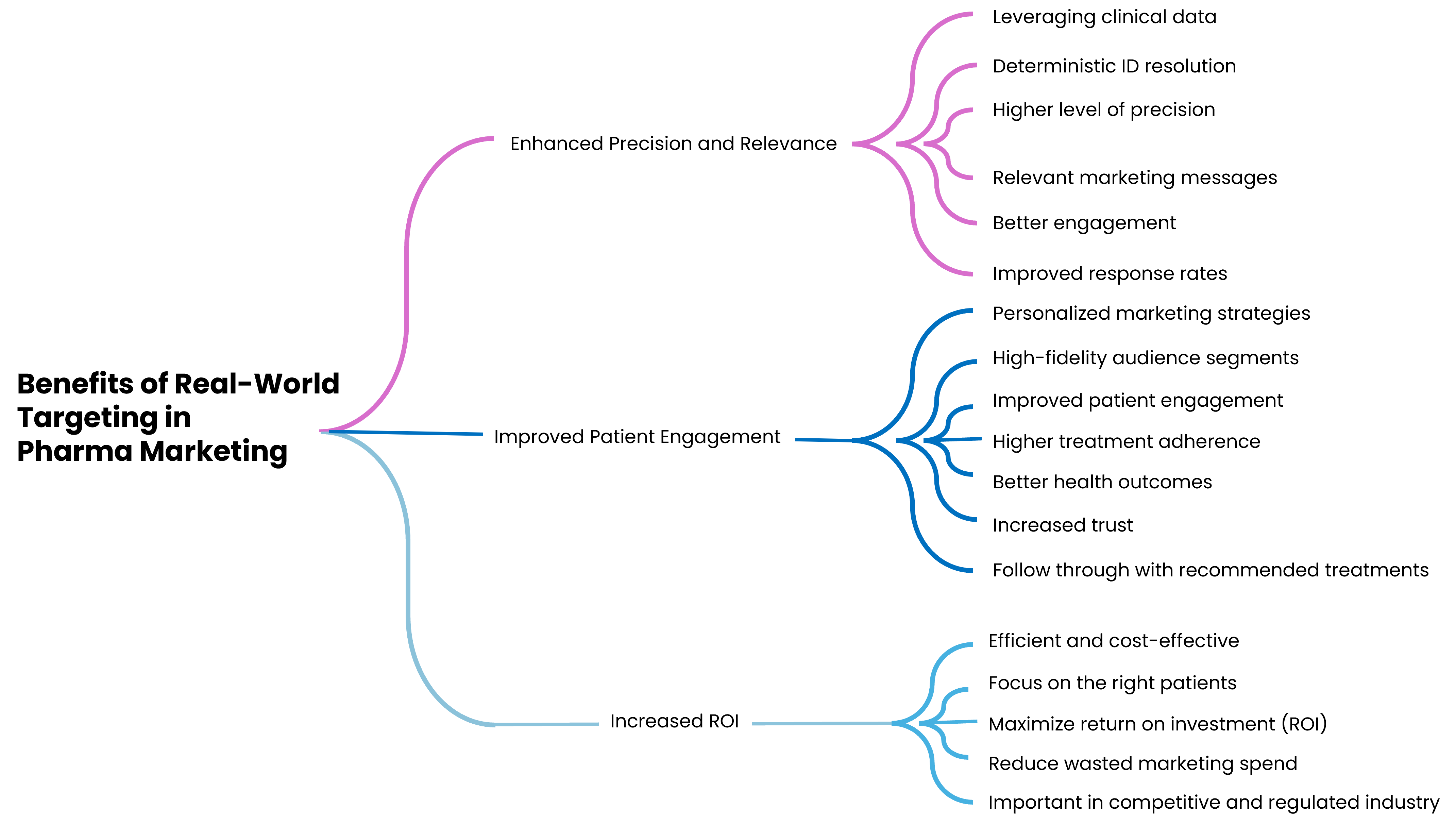
Why Pharma Marketers Need to Shift from Consumer Marketing to Real-World Targeting
As the pharma industry becomes more data-driven, using deterministic ID resolution to create high-fidelity audience segments based on clinical data has become crucial. This transition not only enhances marketing precision but also aligns with the unique needs and complexities of the healthcare sector.
The Limitations of Traditional Consumer Marketing Models
Traditional consumer marketing models, which rely heavily on broad demographic data, generalized consumer behaviors, and mass marketing techniques, often fall short in the pharmaceutical industry. These models typically focus on reaching the largest possible audience with a one-size-fits-all message, which may work for consumer goods but is ineffective for pharmaceuticals where patient needs are highly individualized.
Traditional models use broad demographics such as age, gender, and income levels to segment audiences. However, these factors do not capture the nuanced health needs and behaviors of patients. For instance, two individuals of the same age and income level might have vastly different health conditions and treatment responses. This lack of precision leads to wasted marketing efforts and missed opportunities to engage the right patients.
Marketing strategies based on generalized consumer behaviors fail to account for the complex decision-making processes in healthcare. Patients often make decisions based on specific medical advice, treatment efficacy, and personal health conditions rather than general consumer preferences. As a result, traditional marketing messages may not resonate with or reach the intended audience.
The Shift to Real-World Targeting
Real-world targeting leverages detailed clinical data and deterministic ID resolution to create precise audience segments. This approach focuses on reaching specific patient groups based on their actual health conditions and treatment needs, leading to more effective and personalized marketing strategies.
Deterministic ID Resolution
Deterministic ID resolution involves linking disparate data sources to create a unified and accurate profile of an individual. In the context of pharmaceutical marketing, this means integrating data from electronic health records (EHRs), claims data, prescription data, and other clinical sources to build a comprehensive view of a patient’s health journey.
This method contrasts with probabilistic models, which use statistical methods to infer identities based on partial data. By using deterministic ID resolution, pharma marketers can accurately identify and target patients who are most likely to benefit from specific treatments. This not only improves the relevance of marketing messages but also enhances patient engagement and treatment adherence.
Creating High-Fidelity Audience Segments
High-fidelity audience segments are created by analyzing clinical data to identify specific patient groups with similar health conditions and treatment needs. This process involves several key steps:
Data Collection and Integration
The first step is collecting and integrating data from various clinical sources. This includes EHRs, claims data, lab results, and prescription data. Integrating these data sources provides a holistic view of a patient’s health status and treatment history.
Data Analysis and Segmentation
Once the data is integrated, advanced analytics and machine learning techniques are used to analyze the data and identify patterns. This analysis helps to segment patients into high-fidelity groups based on specific criteria such as disease state, treatment history, and response to therapies.
Personalized Marketing Strategies
With high-fidelity audience segments, pharma marketers can develop personalized marketing strategies tailored to the specific needs and preferences of each patient group. This includes targeted messaging, personalized content, and customized engagement strategies that resonate with patients on a personal level.
Benefits of Real-World Targeting in Pharma Marketing
The transition from traditional consumer marketing models to real-world targeting offers several key benefits for pharmaceutical marketers:

Enhanced Precision and Relevance
By leveraging clinical data and deterministic ID resolution, pharma marketers can achieve a higher level of precision in their targeting efforts. This ensures that marketing messages are relevant to the specific health needs of each patient, leading to better engagement and response rates.
Improved Patient Engagement
Personalized marketing strategies based on high-fidelity audience segments are more likely to resonate with patients. This can lead to improved patient engagement, higher treatment adherence, and better health outcomes. Engaged patients are more likely to trust the information they receive and follow through with recommended treatments.
Increased ROI
Targeted marketing efforts are more efficient and cost-effective than broad-based campaigns. By focusing on the right patients, pharma marketers can maximize their return on investment (ROI) and reduce wasted marketing spend. This is particularly important in the highly competitive and regulated pharmaceutical industry.
Compliance with Regulatory Requirements
Pharmaceutical marketing is subject to strict regulatory requirements that govern how and to whom marketing messages can be delivered. Real-world targeting ensures that marketing efforts comply with these regulations by accurately identifying and targeting appropriate patient groups. This reduces the risk of regulatory violations and enhances the credibility of marketing efforts.
Challenges and Considerations
While the benefits of real-world targeting are clear, there are several challenges and considerations that pharma marketers must address:
Data Privacy and Security
The use of clinical data in marketing raises important privacy and security concerns. Pharma marketers must ensure that all data collection, integration, and analysis processes comply with relevant data protection regulations such as HIPAA and GDPR. This includes implementing robust data security measures and obtaining appropriate patient consents.
Data Quality and Integration
The effectiveness of real-world targeting depends on the quality and completeness of the data used. Pharma marketers must invest in data quality initiatives to ensure that the data is accurate, up-to-date, and comprehensive. Additionally, integrating data from multiple sources can be complex and requires sophisticated data management capabilities.
Ethical Considerations
Pharmaceutical marketing must be conducted ethically and with the best interests of patients in mind. Real-world targeting should not be used to exploit patient vulnerabilities or promote inappropriate treatments. Marketers must adhere to ethical guidelines and prioritize patient well-being in all their efforts.
